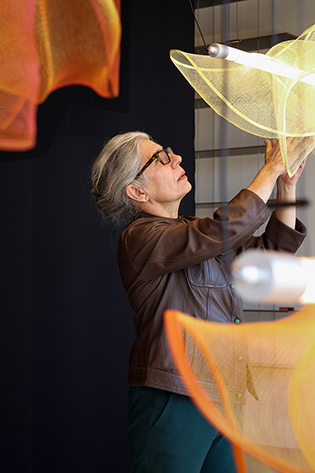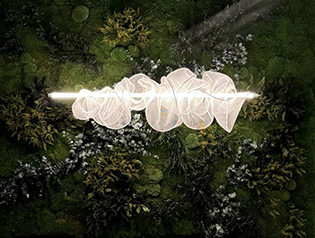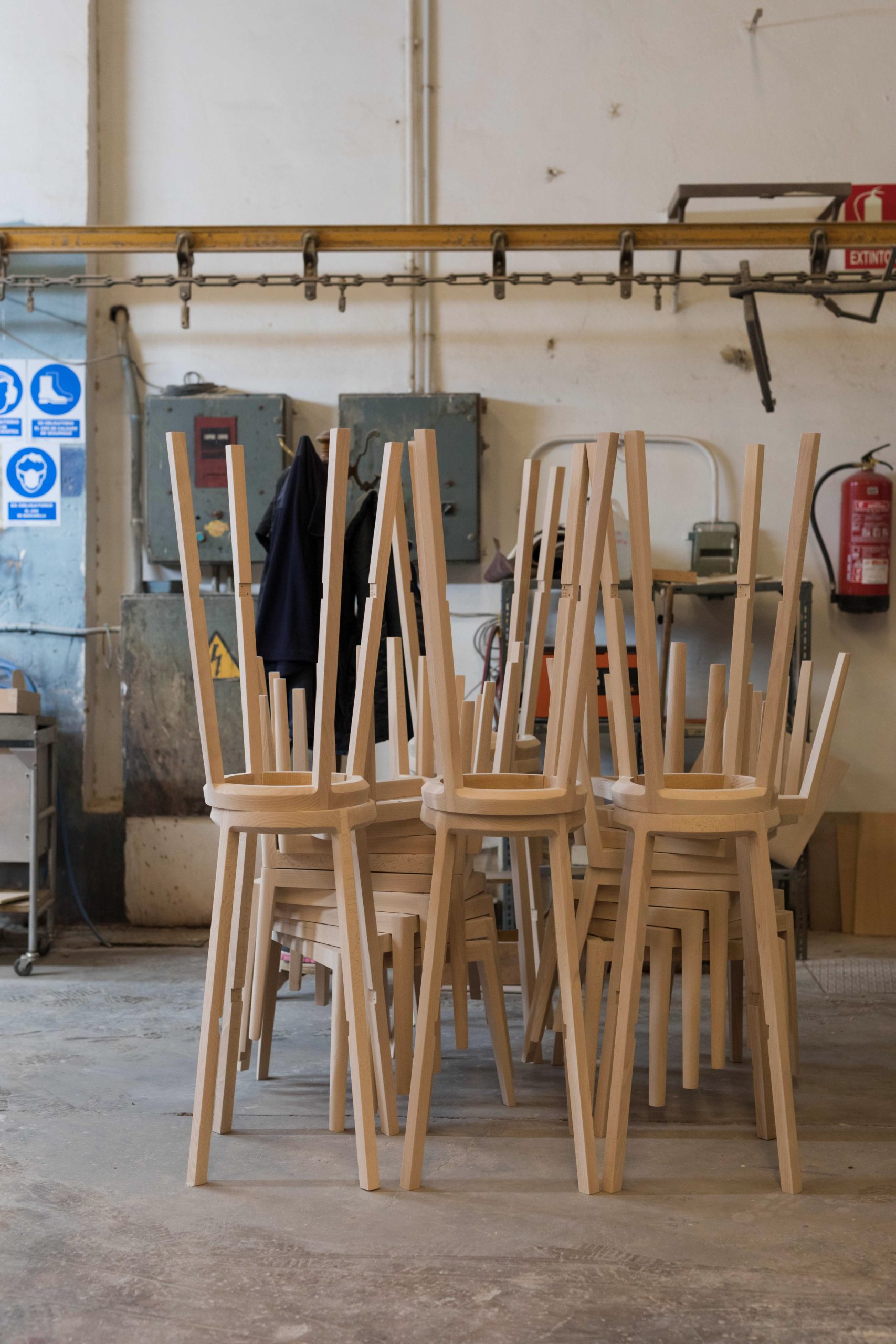Santiago Relanzón has worked as a professional photographer since the 1970s. With years spent honing his craft, he has developed considerable expertise in many areas of photography, from art and architecture to archaeology and photographic reportage. As a result, Santiago has a broad-ranging list of prominent and illustrious clients, including: Spain’s Ministry of Culture and National Archaeological Museum, the Polytechnic University of Valencia, Acciona, Yamaha, and LZF, to name a few.

Santiago Relanzón.
Santiago Relanzón describes himself as ‘one of the old-school photographers’. He is passionate about light, a tireless seeker of beauty, and a lover of art and architecture. He is adept at finding the right moment to take a photo, conscious of subtleties and details, and of the ‘flavour’ of an image. Santiago’s flourishing work, life path, and experiences shared with friends, have afforded him the calmness and knowledge to lead by example. He can attest to the fact that life is a collection of circumstances, shaped by choices made.
Continuing LZF’s people with character series, we talk with Santiago Relanzón about his growth as a photographer and his work.
Describe yourself with five words.
(SR) Curious. Art and beauty lover. Observer. Perfectionist.
How did you become a photographer?
(SR) I have lived together with photography since I was a child. My father was a photography enthusiast. He had good equipment and we had a photo lab at home, where I took my first steps. I was fascinated by the magic of the images appearing on paper that I had imprinted beforehand. It was exciting.
When I was studying law, that was when I began taking photos professionally and doing photo reports. Motivated by my curiosity and thirst for knowledge, I moved from law to study physics and optics. My camera became something of a licence that gave me access to people’s attention—by means of images, I was able to express myself better than through words. I would take pictures wherever I went. My curiosity for photography kept growing, becoming profitable. It turned out to be a fun, exciting, and useful way to make a living.
Two of your collections—‘La Sombra Transparente’ and ‘Sombras Emergentes’—explore shadows and the human form. What was the inspiration?
(SR) ‘La Sombra Transparente’ (Transparent Shadow) is a pictorial work by the Spanish artist Vicente Peris Marco, with whom I closely collaborated. Using ten-meter-long canvases, with a gunpowder mixture, Vicente painted the shadows and movements shaped by the bodies of a group of dancers in an improvised choreography. The result resembled an enormous Japanese calligraphy page, with incredible beauty and power.

‘La Sombra Transparente’.
I was moved by the dancers’ bodies and by the way their architecture created human landscapes. The painter painted the shadows and the photographer portrayed the shadows’ owners. Some months later, this experience led me to start working on my project ‘Sombras Emergentes’(Emerging Shadows), where I focused solely on the human element. Now the bodies were detached from their shadows and sometimes they flew. It was an exciting experience and I owe much of the project’s success to the dancers I worked with, who felt as I did. Currently, I am working on my fourth project of shadows: ‘La Sombra Encontrada’ (Encountered Shadow).

‘Sombras Emergentes’.
What sparked your particular interest in capturing a range of archeological sculptures?
(SR) Stones, especially those that have been manipulated by people, have always intrigued me. More than just stones, the ancient treasures of humankind hold secrets and messages—stories—that you can only discover by being close to them, and with enough time to let them speak to you.
I came into contact with archaeology through my participation in a multidisciplinary project with the Spanish Ministry of Culture. The project centred on the research and promotion of Spain’s National Artistic and Historical Heritage. Having the opportunity to stand in front of the most important Iberian, Roman, Visigothic, Muslim, and Gothic sculptures and architecture, with the time to listen to what they tell you, was an indescribable experience. It was very rewarding and a great privilege.

Dama de Elche (Lady of Elche). It was discovered in 1897 and created 426 BCE–376 BCE.
Your work embraces the fields of art, architecture, archaeology, and photographic reportage. What unites everything together? Do you have an overarching creative philosophy?
(SR) The link between my photographs in these particular fields, and in studio and product photography, is found in my innate curiosity, and my passion for light and beauty. Experience teaches you to master technical elements and so my photos also have a strong aesthetic nature.
I don’t have a predetermined philosophy when it comes to taking photos. It’s more about that moment when you sense something is happening—you see the photo in your head and take it. I’d rather call it ‘sensing creative moments’, as opposed to a creative philosophy. That’s what guides me, whether it is when I’m inventing a shot or I’m tasked to photographically reproduce something.

Berlin.
Describe your relationship with LZF. What do you enjoy most about working with Mariví, Sandro, and the team?
(SR) My professional relationship with LZF began when LZF first saw the light of day, although my personal relationship with Mariví and Sandro dates back much further. I started taking photographs of their first creations in 1995, and we still work together today. Collaborating with LZF always feels good and the work becomes easier. There are two main elements to this: a mutual understanding and the team’s professionalism. After such a long time, our relationship is based on trust and respect.

LZF’s Suns at Kaido Sushi Bar, Valencia. One of the many photos by Santiago Relanzón for LZF.
You have worked as a professional photographer for many years. How has your work evolved? To what extent has the growth in new photographic technology influenced/changed your creative approach?
(SR) Many things happen in forty years, with life’s ever evolving changes, and its ups and downs. I started like almost every photographer of my generation, using photo reportage, black and white lab, analogue photography, and having a necessary period of learning. Then, studio photography arrived and I was able to manipulate, shape, and even tame light. For this reason, I had to keep up to date with technological changes and developments. I like to control and master the elements I work with, and as far as possible, to do so with cutting-edge equipment. With this photographic evolution, a progressive improvement in quality and in aesthetic values have characterised my work. It is safe to say that a certain maturity has become evident. Throughout my professional career, I have perhaps placed too much emphasis on technique, but this is due to my eagerness to know why things happen.

‘La Sombra Encontrada’.
The arrival of digital technology brought about a great disruption in photography, with a change in the tools we were using and the need to adapt. The only important thing we lost is pure black-and-white from silver particle emulsion. The ‘concept’ itself has not changed at all—it is the tools that have evolved. The range of possibilities offered by digital technology are immense. You now have more control over the entire process and many more creative solutions. That said, I am one of the old-school photographers and my creative approach has not changed. The photograph is taken the moment the shutter of the camera has closed. I use software to develop the photo and to adjust any settings that it requires, such as colour temperature, density, balance, contrast, and so on.

Cueva Candamo Caballo. Part of the Altamira Caves and Palaeolithic Cave Art in northern Spain.
Today, everyone is a photographer. How do you feel about a behemoth such as Instagram and its affect on creativity?
(SR) Nowadays it is easier to take pictures, however most of them are not taken by a photographer, but by a digital camera. These cameras focus automatically and you don’t have to worry about lighting. As a result, the quality has dropped. The images are overly saturated and filters are overused, meaning they look either unreal or dead. In the past, you wouldn’t publish a bad picture—now you ‘post’ everything.
However, Instagram does give individuals the possibility to easily display their creativity, in a dynamic format, and in an immediate and cheaper way. This is good because it creates a great movement of images that, independent of ridiculous trends, influences, and mediocrity, can foster the emergence of true creators and artists.
That said, a negative aspect is that with immediacy—the speed with which new images appear—everything is ephemeral.

Valencia’s hip and trendy Ruzafa district.
You are working on a series of virtual tours of World Heritage Sites across a number of Spanish cities. What are your aspirations for this project?
(SR) It is a promising and beautiful project. The work connects high-end technologies for high-resolution images and virtual reality, with pure arts and history. It also displays aspects and places unknown until now. Unfortunately, due to budgetary–political reasons, the project has been paused and is not yet finished. We hope that it can resume in the near future.
Click below to see more of Santiago Relanzón’s photographic oeuvre.
All photos © Santiago Relanzón, except portrait photo by Juan Martinez Lahiguera.














